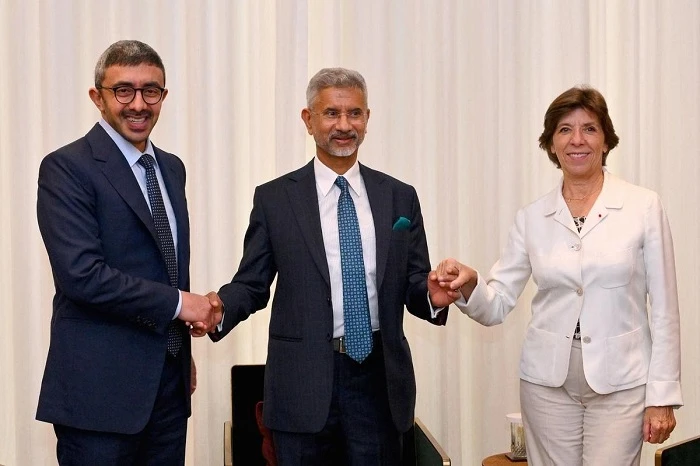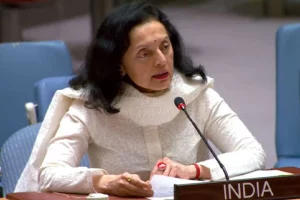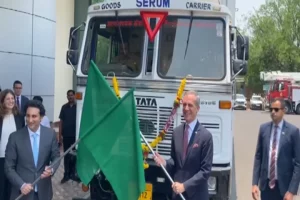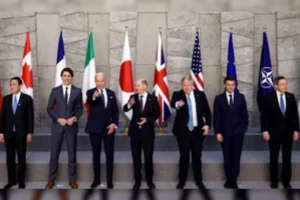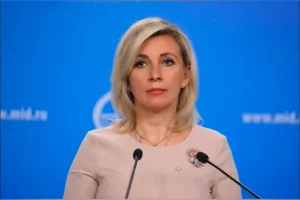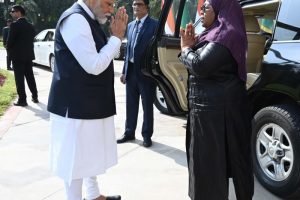Western Indian Ocean (WIO) is an often-overlooked strategic theatre in the Indo-Pacific region. The region is defined as the one lying between Egypt, South Africa, and India’s western coast. For India, WIO is an important subregion in the Indo-Pacific. It connects India with West Asia and Africa. India’s trade, energy and economic security depends on the sea lanes of communication (SLOCs) that traverses the WIO.
Map of the Western Indian Ocean, with the routes indicated by the Periplus [courtesy: Mikhail Bukharin].https://t.co/f8JOcFZwLx pic.twitter.com/lJYdi6xVw9
— GemsOfINDOLOGY (@GemsOfINDOLOGY) April 28, 2022
India’s growing military power is projected in this region as could be seen in activities like anti-piracy operations, Humanitarian Assistance and Disaster Relief (HADR) efforts and various forms of capacity-building programmes. The Indian navy has been a regular player in the strategic affairs of this region and considers the WIO as an ‘area of primary interest’. It has contributed to maritime security in the region and considers itself as the ‘preferred security partner’ for regional countries.
Two recent developments further underscore India’s expanding strategic footprint in the WIO. First, in the last week of February, India’s Information Fusion Centre-Indian Ocean Region (IFC-IOR) and the Regional Coordination Operations Centre (RCOC) in Seychelles signed an MoU. The MoU “aims to promote collaboration between the two Centres towards enhancing maritime domain awareness, information sharing and expertise development”.
In order to further the existing cooperation in the realm of maritime safety and security, IFC-IOR signed an MoU on 21 Feb 2023 with Regional Coordination Operations Centre (RCOC), Seychelles.https://t.co/Ifha6HTWW0 pic.twitter.com/DkOiDHiDqB
— Shahid Anwar (@UltimatumArmada) February 22, 2023
For India, the necessity to enhance sharing of information and better monitor the strategically important maritime space of WIO is a key driver behind the MoU. The WIO is home to a number of traditional as well as non-traditional security threats. WIO is witnessing the growing and regular forays by China’s People’s Liberation Army Navy (PLAN). In fact, China’s only overseas military base in Djibouti is located within the WIO. Recently, PLAN conducted naval exercises with the navies of Russia and South Africa in the WIO off the coast of South Africa. Besides, the WIO is a key conduit for drugs and arms trafficking. The region was once known as the hotbed for piracy and armed robbery at sea. It is home to several weak and unstable states like Yemen and Somalia.
Maritime security challenges in the WIO are ever-present and if anything, have gone up with the amalgamation of traditional and non-traditional threats. Therefore, capacity-building is an important dimension in India’s outreach in the WIO, especially towards the smaller island States. As per Safety4Sea, a website dedicated to maritime affairs, the MoU between IFC-IOR and RCOC “will include training in operational information-sharing and maritime domain awareness. There will be seminars, workshops and exercises on maritime security, safety, and information sharing”.
IFC-IOR, since its formation in 2018, seeks to strengthen maritime security in the IOR. The centre hosts Liaison Officers from 12 countries including some from the WIO and facilitates collaborative efforts. IFC-IOR has emerged as a key institution in India’s evolving Indian Ocean strategy. RCOC in Seychelles is part of the maritime security architecture in the WIO. The Indian Ocean Commission, a group of five, French-speaking Southwest Indian Ocean countries, supports the RCOC. Moreover, the RCOC works closely with the Regional Maritime Information Fusion Centre (RMIFC) which is based in Madagascar. The MoU between IFC-IOR and RCOC is likely to “enhance trust” and will improve “synergy between the Centres towards furthering collaborative maritime safety and security in the Indian Ocean Region”.
India, France and UAE Trilateral
The second development was the formal establishment of a trilateral initiative between India, France, and the United Arab Emirates (UAE). The three states enjoy excellent bilateral ties, share convergence of views on the Indian Ocean and are key stakeholders in the WIO. France defines itself as the Indian Ocean country owing to its territories in the Southwest Indian Ocean whereas UAE has become a very active strategic player in the Northwest Indian Ocean – primarily in the Gulf of Aden and Red Sea region. The trilateral strategic initiative seeks to enhance cooperation in sectors like energy, economy, and defence. Climate change and sustainable development are also key areas for trilateral cooperation. The collaboration in defence will take the form of joint military exercises, training and visits, and co-production etc. Interoperability, at least for the Air Forces, can also be considered given that three countries operate French-made fighter jets like Mirage-2000 and Rafale.
A productive first trilateral Ministerial meeting of India-UAE-France.
Active exchange of ideas between strategic partners and UNSC members.
Thank @ABZayed for hosting @MinColonna and me. pic.twitter.com/nN5QxfBMi6
— Dr. S. Jaishankar (@DrSJaishankar) September 19, 2022
India’s deepening ties with Seychelles on the one hand and with UAE and France on the other point towards the multi-dimensional approach towards the WIO. Given the presence, and in some cases, even deepening, of strategic challenges in the Western Indian Ocean, India is likely to continue its engagement with the WIO.
(Sankalp Gurjar is an Assistant Professor at the Department of Geopolitics and International Relations, Manipal Academy of Higher Education, Udupi, India. He is the author of The Superpowers’ Playground: Djibouti and Geopolitics in the Indo-Pacific in the 21st Century)
Also Read: Why has UAE dared to establish a strategic foothold at Socotra?






